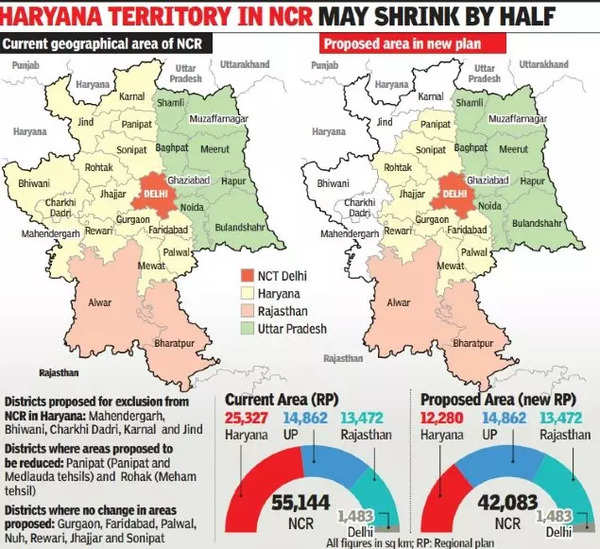
Residents across south, central, and east Delhi reported shaking ceiling fans, rattling window panes and swaying household objects. Many stepped out of homes and apartment buildings, concerned about structural safety. Similar scenes were visible in corporate hubs of Noida and Gurugram, where office staff were seen evacuating high-rise towers as computer monitors and fixtures shook mildly during the tremor.
Although there were no immediate reports of injuries or structural damage, the event has revived concerns over seismic safety in the region, especially in the context of Delhi’s location within seismic zone IV, considered vulnerable to strong earthquakes. Emergency services confirmed they were on standby, though there were no distress calls requiring intervention.
The epicentre in Jhajjar lies less than 60 kilometres west of Delhi, in an area that has recorded multiple low to moderate intensity earthquakes over the past decade. Residents in Rohtak, Bahadurgarh, Dadri and other towns in Haryana experienced similar tremors, describing a sudden and short-lived jolt. Areas in western Uttar Pradesh, including Meerut and Shamli, also reported mild shaking, although no follow-up tremors were recorded.
Geologists have long flagged the need for stringent building regulations in Delhi-NCR to withstand potential earthquakes, even of moderate magnitude. With urban expansion moving vertically across Gurugram and Noida in particular, there has been a growing call among civil engineers and seismologists for retrofitting older buildings and enforcing compliance in high-rise construction projects.
Experts point to the fact that while a 4.4 magnitude earthquake is unlikely to cause major damage, its perceptibility over such a wide radius underscores the density and fragility of infrastructure in the region. Over the years, the Bureau of Indian Standards has updated seismic codes, but enforcement remains inconsistent across municipalities. Delhi’s mix of new developments and ageing urban settlements presents a particularly complex risk profile.
Authorities in the Delhi Disaster Management Authority confirmed that drills and readiness protocols are being reviewed periodically, especially after episodes such as Wednesday’s. However, officials also acknowledged the limitations of public awareness regarding how to respond during a quake. Safety instructions such as staying away from windows, avoiding lifts, and finding cover under sturdy furniture are often overlooked due to panic or lack of information.
Metro services in Delhi, Noida and Gurugram continued uninterrupted, with no reported disruption to the transit network. Airport operations in the NCR region also proceeded without any delays, and no infrastructure alerts were issued by aviation authorities. The Delhi Metro Rail Corporation issued a routine safety review post-tremor as a precautionary step, consistent with established seismic protocols.
In Haryana, local authorities in Jhajjar and neighbouring districts confirmed that schools and public buildings were structurally inspected following the tremor. While no cracks or damage were detected, administrative heads said that engineering assessments would continue as part of broader safety audits planned for the region. Jhajjar’s proximity to Delhi and its growing industrial base have made it an important part of the NCR’s outer ring of development.
Urban planners have reiterated that seismic preparedness needs to be integral to all master plans for Delhi-NCR, particularly as climate-related risks and urban density intersect to increase overall vulnerability. Earthquake-resilient construction, early warning systems and citizen education are being pitched as key pillars of a long-term safety strategy. Past disasters in other parts of the country have highlighted the cost of ignoring such safeguards.
Social media platforms were quickly flooded with messages from residents across Delhi, Gurugram and Noida describing their experiences. Videos shared showed ceiling fans swinging and water bottles quivering on tables. Hashtags related to the quake began trending by mid-morning, with many users asking if a stronger tremor was expected and what safety steps they should follow.
